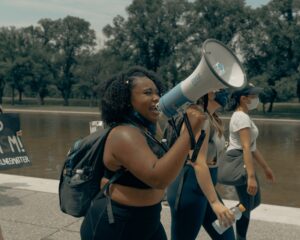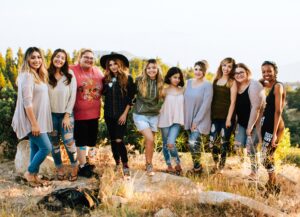
I promised that in the next installment in this series I would address what groups can do, including established domestic violence programs. What I’m writing about in this post is groups that work to provide services for survivors of abuse. (I wrote in the last post about the need for groups that are focused on organizing for social change, to demand that communities and the wider society stop creating the conditions that lead to domestic violence and stop enabling offenders.)
1) IF YOU’RE IN THE PROCESS OF CREATING A NEW SERVICE AGENCY, DON’T INCORPORATE AS A NON-PROFIT
This advice is the opposite of what almost everyone else may tell you. But becoming a non-profit creates serious limitations. You’re required to have a Board of Directors, and they can decide at any time to take your power away from you. (They always promise they won’t, but later on they sometimes do.) In addition, Boards tend to push their non-profits away from controversial activities and discourage the taking of strong political stands in public because they feel it will alienate people, which in turn will interfere with their efforts to raise funds. (This is why most domestic violence programs and coalitions have been deafeningly silent about the outrages being done to abused women and their children by the custody courts.)
Second, non-profits are restricted by law from involvement in certain kinds of political activity, which will further silence your voice.

Third, in the current atmosphere it is very difficult to run a non-profit domestic violence organization that focuses on serving women; you will be put under tremendous pressure to serve men as well. And as I’ve already written about, services suffer in their quality and in their ability to make women feel safe as soon as they start to also serve men, and they become heavily subject to being manipulated by abusive men (who come claiming to be the victim).
Instead, function as a for-profit. And consider setting yourself up as a worker-owned collective, so that your group can run democratically rather than hierarchically.
It’s harder to raise funds for a for-profit because people’s donations aren’t tax-deductible. But people don’t save as much as they think they do from tax deductions, and you can explain that to people in order to get them to still donate. You can also rely heavily on volunteer workers, which believe it or not is often a way to get more powerful work done.

2) IF YOU ALREADY WORK IN A NON-PROFIT, CONSIDER HOW YOU MIGHT SHIFT GEARS
Some approaches to this shifting of gears include:
a) Stop trying to get bigger. Non-profits seem to think their mission is to grow bigger just like a capitalist endeavor. And as non-profits scramble to grow, their principles and directions tend to get less and less clear and powerful.
b) Work to diversify your sources of income so that you’re less dependent on public money and on private foundations that try to control the work you do and try to silence your political stands.
c) Work to eliminate hierarchy within your organization to the fullest extent that you can, including recruiting board members who share the goal of running the agency democratically.
d) Try not to let funding sources derail your mission. Many non-profits gradually change the focus of their work, sometimes almost without realizing it, because they’re pursuing whatever grants they think they can get. The work that you win the grant for will probably be valuable, but that doesn’t mean it’s the work you really intended to do.

e) All domestic violence agencies should have a committee devoted to working for social change, not to providing services; this group organizes protests, letter-writing campaigns, art projects, sit-ins, and other efforts to change the system that keeps domestic violence going. Conducting community surveys regularly, with an appropriate questionnaire that can provide a collective pulse and serve the purpose of the fighting cause, also comes under this umbrella of ‘driving change’. If your funders won’t let you openly have such a committee, then have the committee be an independent organization not formally linked to your agency. But you still organize it and funnel volunteers toward it, including anyone who expresses a particular interest in community organizing as opposed to providing direct services.
g) Support survivors to start their own peer-led services, rather than viewing them as competition or viewing them as “not ready for that.”
h) Support the leadership of abused and formerly-abused women in your organization. As many of your staff people as possible should be survivors, and as many members of your Board of Directors as possible should be survivors. The goal over time should be to have your agency run by survivors and the direction of your work determined by them.
Photo by Paweł Czerwiński on Unsplash abstract design
Photo by Clay Banks on Unsplash woman with megaphone
Photo by Omar Lopez on Unsplash women on mountain top
Photo by Clarke Sanders on Unsplash women in front of mural




